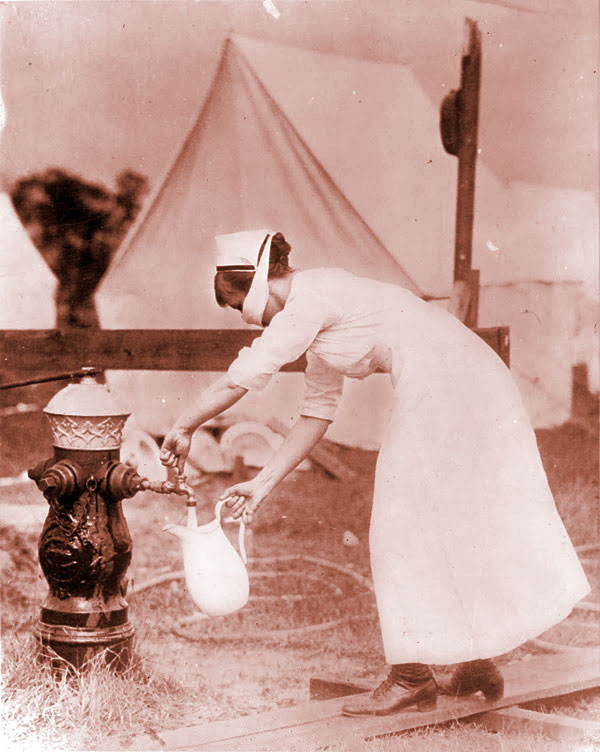
The year 2018 marks the 100th anniversary of the Spanish flu epidemic, which killed about one-third of the human population on Earth. We also have, this year, an especially virulent strain of the flue to contend with. How society prepares for, and responds to, infectious diseases is the topic of these teaching resources.
Raphael Mazzone and Lee Ann Potter, “Documents Related to the Flu Pandemic of 1918,” Social Education 70, no. 7 (November/December 2006): 393–396. *** As World War I neared its end, a worldwide epidemic claimed more victims than the war itself. The two featured documents recall the loss of life and havoc in the United States. Open access: https://www.socialstudies.org/publications/socialeducation/november-december2006/documents-related-to-the-flu-pandemic-of-1918
Diane Luke and Ann Winkler, “The Saffron Scourge: Society, Politics and Disease,” Social Education 71, no. 1 (January/February 2007): 40–43. *** By taking a closer look at various yellow fever outbreaks, the authors demonstrate for students the social, governmental, and economic impact of epidemics upon cities. For NCSS members: https://www.socialstudies.org/publications/socialeducation/january-february2007/the-saffron-scourge-society-politics-and-disease
The Vaccine Makers Project ("Hilleman" film clip, resources, curriculum). Ironically, the very success of vaccines in the 20th century created a public policy dilemma: people have forgotten the risks of epidemics and the suffering they can cause. The Vaccine Makers Project seeks to engage audiences in stories of vaccine science and development. It comprises a 2016 biographical documentary film, “HILLEMAN – A Perilous Quest to Save the World’s Children,” and a school-based curriculum—two units about how the immune system works, how diseases develop, and how vaccines work to prevent them. “While the immediate goal is to provide teachers with the information and tools necessary to teach this scientific success story, the greater opportunity is not only to immunize our country’s next generation of parents against the misconceptions around vaccine safety, but also to equip them to critically evaluate the multitude of science-based topics central to how we live on and interact with this planet today. Only when people understand and consider the scientific underpinnings of relevant topics can we expect that they will be equipped to make informed and logical decisions.” The project is produced by Medical History Pictures and sponsored by the Vaccine Education Center at The Children’s Hospital of Philadelphia. Stream the film $2.99; purhase $9.99.
http://vaccinemakers.org/ Curriculum at http://vaccinemakers.org/education/
Sandra W. Moss, M.D., “Yellow Fever in Philadelphia, 1793,” Middle Level Learning no. 31 (January/February 2008). *** This 16-page PDF reviews two books—An American Plague and Guns, Germs, and Steel—and offers a handout graphing yellow fever deaths in New Orleans 1845-1860. For NCSS members: https://www.socialstudies.org/publications/mll/January-February2008
Centers for Disease Control, “Influenza (flu): Information for Schools & Childcare Providers,” (November 15, 2017). *** On this webpage, you will find information on preventing the flu as well as materials and tools for schools, including “Gigi’s Story,” in which a school teacher and mom gives her testimony about the importance of getting a yearly flu vaccine.” https://www.cdc.gov/flu/school/index.htm